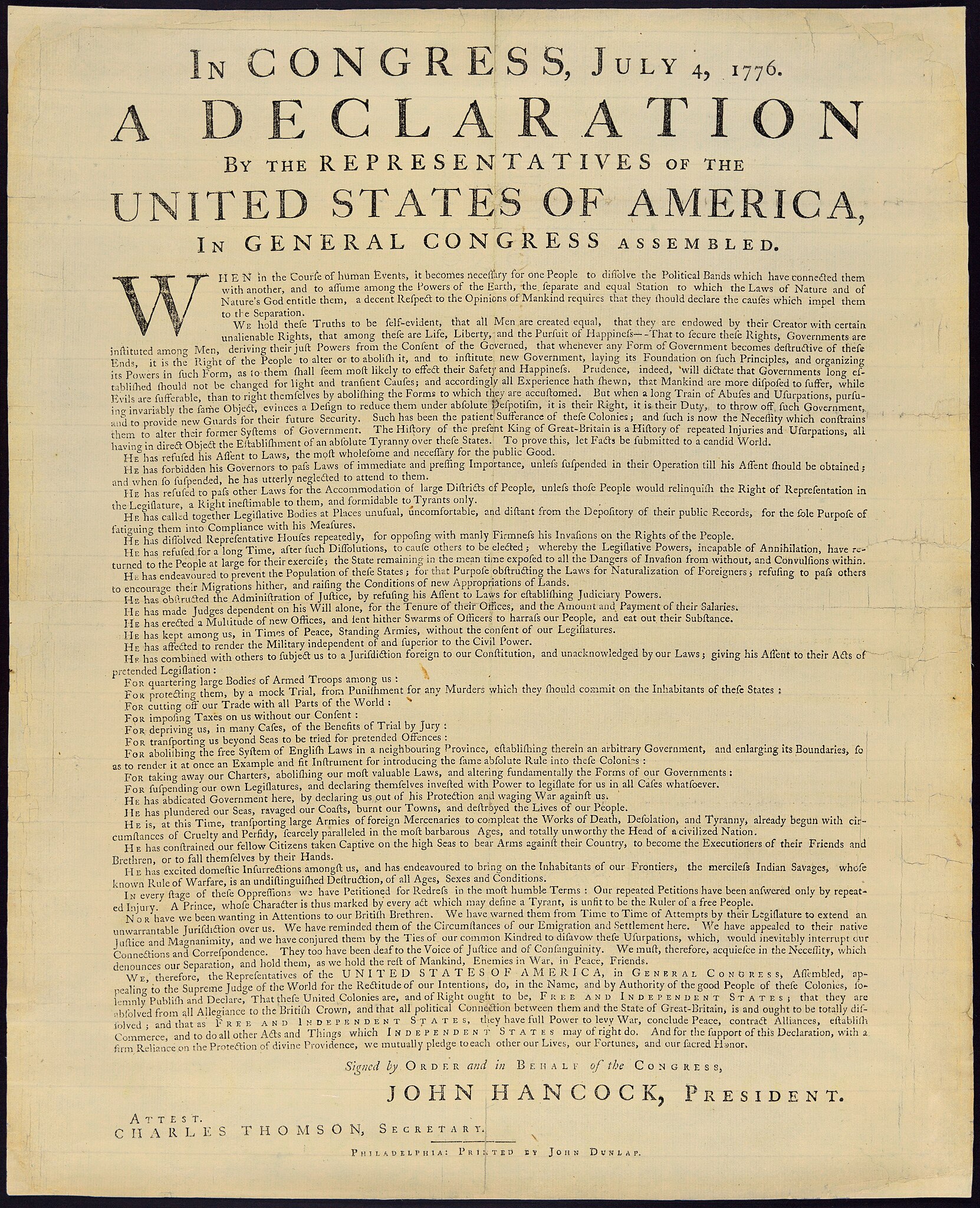1 Historical Concepts of Social Justice
Cailyn F. Green; Kim Brayton; and Bernadet DeJonge
- The reader will identify how historical concepts have impacted the experience of social justice, diversity, and equity in the United States today.
- The reader will identify historical legal codes that have impacted the experience of social justice, diversity, and equity in the United States today.
Many societies today have established what they believe to be an equitable distribution of opportunities, wealth, control, power, and privilege—but how did these approaches come about? Historical context provides an important framework for current social justice concepts. This chapter reviews historical attempts to define social justice, from Hammurabi of Babylon to the Founding Fathers of the United States, and lays the foundation for ongoing development and discussion of contemporary and current social justice topics. This chapter is not exhaustive of all historical social justice concepts, as this is not the primary focus of this text. However, some understanding of the history which leads to current day social justice constructs is necessary.
Code of Hammurabi
The Code of Hammurabi was created by Hammurabi, the King of Babylon, in the Middle East, around 1790 BCE. It is recognized as one of the first legal codes, predating other well known written codes, such as the Jewish Ten Commandments (around 1000 BCE), the Hindu Vedas (around 800 BCE), and the writings of the philosopher Confucius (around 500 BCE) (Finucane, 2017). Not only was it the first of its kind, but also unique to later codes in that it was a formally written legal code enforced by the government. This may reflect an expectation from lawmakers in this period (1790 BCE) for people to treat their fellow community members with respect and dignity.
Visit the Avalon Project website to read through some of Hammurabi’s laws: The Avalon Project: Code of Hammurabi.
Discussion Questions
- What values were the lawmakers attempting to legislate?
- Discuss how Hammurabi’s code is still in use today. What current laws or policies exist that may be grounded in this historical code?
The prelude to the Code of Hammurabi includes the justifications and purpose for creating the code. It begins with Hammurabi explaining his royal status and undeniable authority. He explains: one of their gods has given him the right to protect the people of Babylon, and he is doing this righteously by creating a set of laws that everyone must live by. These laws encompass family laws, tax laws, and contractual laws, and include punishment by death and/or mutilation (Pyrcz, 2019). One of the most well-known tenets of the Code of Hammurabi is “an eye for an eye”; essentially, “whatever I did to you, you should be able to do to me.” However, the implementation was not always equal. This may be one of the earliest forms of documented discrimination. If a free man were to punch a slave in the face, the free man might be fined, as the individuals during this time considered a slave’s life to be worth less than the life of the free man. However, if a slave were to punch a free man in the face, the slave could lose their hand altogether (Pyrcz, 2019). This injustice reflects societal attempts, even in some of the earliest recorded human history, to balance individual human value with a community of social justice.

That the Code of Hammurabi was developed and written in stone acted as a form of societal control. These laws were written physically and irreversibly to show community members that they would not waver, regardless of who committed the crime. Inscribed on a black stone pillar, the laws included the belief that if someone was accused of a crime, they were presumed innocent. On the other hand, the Code of Hammurabi also treated individual lives as having varying levels of worth. For example, a pregnant slave was only considered to have a third of the value held by a free man’s eyeball (Pyrcz, 2019).
Watch Dr. Paul Raha dive deeper into Hammurabi’s Code: The Code of Hammurabi & the Rule of Law: Why Written Law Matters
Discussion Question
- Why is it important that laws evolve as society changes?
The Golden Rule
The next historical group of ideas that can be connected to early social justice concepts are found in religious books and religious followings. These include what is commonly referred to as the Golden Rule in the Abrahamic faiths (Finucane, 2017). This Golden Rule, in its more basic form, means to treat others as you would want to be treated. The Golden Rule in the Christian holy book, the Bible, is found in the book of Matthew, as a part of the Sermon on the Mount. It states: “Therefore all things whatsoever ye would that men should do to you, do ye even so to them: for this is the law and the prophets” (King James Bible, 1769/2017, Matthew, 7:12). This is often translated into the concept: “Do unto others as you would have them do unto you”. The Muslim holy book, the Qur’an, states a similar idea: “Love your neighbor as yourself” (Finucane, 2017).
The essence of the Golden Rule is seen throughout history in various religious contexts. These variations of a Golden Rule helped to guide the reciprocal nature of interaction between individuals by focusing on what to do, instead of what not to do. It is important to note, however, that the Golden Rule can be very subjective. As the “rule” is open to interpretation, it may be manipulated for ill intention. The Golden Rule works due to social consequence; it provides a socially acceptable outcome if an individual engages in a certain behavior or action. With the Golden Rule heavily influencing many social norms and laws throughout history, its subjectivity is essential to recognise. Does the Golden Rule, for example, allow society members to do good to others because they themselves believe it to be good, even though the other parties may not (Green, 2008)?
- Did you grow up with some version of the Golden Rule? Why do you think that this concept has been sustained throughout history into the present day?
- Can you think of an example when the Golden Rule might not work?
- What about doing good even if others don’t think it is good? Can you think of an example of this?
- How might your personal bias come into play with the Golden Rule?
- How do your religious beliefs work (or not) with the Golden Rule?
Magna Carta
The Magna Carta is a document that was written by King John of England in 1215. It defined who held power over the English people. At the time, the English people argued over the King’s extreme level and misuse of authority. This document contains basic principles of human rights and stated that even the King was not above the law (Turner, 2014). With the monarchy having been previously seen as all-powerful and unchallengeable, this represented a large shift in power.
At the time, the Magna Carta was seen as a solution to all of England’s political problems. It contained laws ensuring personal freedom, and supported the idea of equity under the law. The Magna Carta contained rules which have been interpreted and used as a foundation for the development of laws throughout history. This includes rules regarding the freedom of individuals, particularly around imprisonment. The Magna Carta significantly influenced the systems of justice now seen in the United States. Concepts of a fair and impartial judge and a jury of one’s peers can be traced back to this historical document. Eventually, the Magna Carta was brought to the United States by English settlers who felt they were the king’s free subjects as they settled into the New World (Turner, 2014).
Read through the National Archives Magna Carta translation in its entirety.
Discussion Questions
- What do you think is interesting in the Magna Carta? Why?
- How does the Magna Carta relate to life today?
The Declaration of Independence

The Declaration of Independence was signed by the Continental Congress on July 4th, 1776. It declared the separation of the thirteen North American colonies from England following the American Revolution between 1775 and 1776, creating the United States of America (Britannica, 2022). The Declaration of Independence included principles such as that “all men are created equal,” and that all men have “inalienable rights…of life, liberty, and the pursuit of happiness.” It is important to note that this doctrine was initially designed to be applied only to certain men; it did not include people who were enslaved, or women. The Declaration of Independence has been the foundation of many of the social justice arguments throughout American history.
The theological context behind the Declaration of Independence was the notion that God had instilled all people with basic human rights, and that no one person in power has the right to revoke power from others (Britannica, 2022). The Declaration of Independence states that the people will choose who holds power, and that those given power cannot give it to someone else (Jayne, 1998). This concept stems from the mentality that since God is the creator of all things, only He has the power to instill this type of power (Beck, 2016).
The Declaration of Independence also valued, what they considered to be, basic moral judgement, relying on the idea that the government and those chosen to run it would be morally judged by its citizens. This places the responsibility of choosing a morally sound government in the hands of the people, including the decision of how to define morality (Jayne, 1998). It cannot be forgotten that during this time, the same people who were writing the Declaration of Independence owned slaves, and considered this morally right (Sandefur, 2018). It is important to remember the subjectivity of moral values.

Read through the Declaration of Independence as reproduced on Harvard’s Declaration Resources Project website.
Video: Declaration of Independence.
Discussion Questions
- Why did the colonists feel that they needed to include the line “The right to life, liberty, and pursuit of happiness?”
- Does this line still apply to us today? Why or why not? Please provide examples for either argument.
The Constitution
The United States Constitution was written in 1787 and has been in operation since 1789. The Constitution was written to connect the United States by a common thread of laws and interests (National Archives, 2022). By promoting a general sense of welfare and unity, the United States Constitution organized the government branches and explained the responsibilities of each. It outlined the powers that each branch held and how they were expected to practice and work together as a cohesive entity (National Constitution Center, 2023).
Read through the entire United States Constitution with helpful annotations through the National Constitution Center’s website.
Discussion Questions
- Does the United States Constitution still work? Why or why not?
- If you had the power to do so, what would you change about the Constitution?
Bill of Rights 1791

The Bill of Rights are amendments written in 1791 to address objections to the Constitution. These amendments were intentionally written to guarantee United States citizens freedoms and rights. The federalists, including James Madison, studied the United States Constitution and identified several important issues which they felt had been overlooked in the initial Constitution. The Federalist Party designed 12 amendments and sent them to Congress for ‘ratification’: the process to formally change the United States Constitution. For an amendment to be ratified, it must be proposed by Congress with a two-thirds majority vote and then by three-fourths of the states. Another way an amendment can be ratified is through the legislatures in two-thirds of the states being in agreement to move in this direction. Congress ended up ratifying points three through 12, which became the first 10 amendments of the United States Constitution, titled the Bill of Rights (National Archives, 2016).
The Bill of Rights evolved as a response to the treatment of the English monarchy towards the colonists before the American Revolution. The newly formed United States government wanted to clearly outline the rights that the new government could not infringe upon. They wanted to give the new government a vital role in protecting citizens from abusive governments (Amar, 1998). Examples of these rights include the right to freedom of speech, the right to bear arms, and the right to not allow the government or soldiers to requisition their homes. The latter is a practical example of a pervasive issue during the period, as the British soldiers had the right to go into any home and take it for their own use during the Revolutionary War. Similarly, each of these ten amendments is connected to, and derived from, an intentional process of regulating government overreach in an effort to prevent future treatment of citizens like that of the colonists by the English monarchy.
Today, there are 27 amendments to the United States Constitution (National Archives, 2016). That means that 17 amendments have been added since the Bill of Rights was created. Thus, the United States government is founded on the idea that the people have the power to adjust and add to the Constitution as society changes. Eighteenth century politicians saw the need for citizens to be able to evolve their government, and this is the process they established to facilitate this (National Archives, 2016).
Read the first 10 amendments that compose the Bill of Rights via the National Archives.
Discussion Questions
- How do you connect the Bill of Rights to your life today?
- How does the Bill of Rights hold up in today’s society?
Considering its history and foundation, how has social justice developed over time, and what has aided in its creation? An exploration of some examples of world problems that exist today and hinder society from fully achieving social justice follows. Examination of these concepts throughout this textbook is not meant to be comprehensive, but rather to introduce the reader to areas of interest and concern and encourage independent research.
- Ageism, anti-democracy, arms race, autocracy (the authors would like to add ableism to this list)
- Breaches of human rights, breakdown of public services and public goods, burnout
- Chauvinism, classism, climate change, consumerism, consumption of resources to the point of global destruction, commodification and monetization of human life, conflicts across the world, crimes against humanity, criminal activity
- Despotism, dictatorships, discrimination, disease, disproportionate wealth in the hands of the few, dominatory ideology, drought
- Economic hegemony, energy costs, environmental decay and degradation, exclusion, exploitation, extremism
- Fake news, false imprisonment, fascism, financialization of life, food shortages
- Gender, genocide, global pestilence, greed
- Hatred, health and health care problems, hegemony, homophobia, hopelessness, hunger
- Identity, ideology, individualism, inequality, inhumanity, injustice, intolerance
- Justice as a purchasable commodity
- Klepto-autocracy
- Lawlessness, legitimation crises
- Mass media, materialism, migrants, militarization, misrecognition, monetization of life, motivation crises
- Narrow utilitarianism, nationalism, nationalistic populism, neglect of humanity, neocolonialism, neoliberalism, New right
- Oppression, othering
- Political hegemony, pollution, population explosion, poverty, power, pragmatism, prejudice, privatization of public goods, profiteering, pursuit of profit at all costs
- Questioning of legitimacy and rights, quiescence in the face of injustices
- Racism, recognition, refugees, relativism, rentiers, repression
- Sexism, social exclusion, social injustice, sovereign debt crises, species extinction, starvation, steering media, stigmatization, surveillance society
- Theft, threats to democracy and emancipation, torture, totalitarianism, transphobia
- Unemployment, unequal opportunity, underinvestment for the public good, unfreedoms
- Violence, virus control for health, volatile food prices
- War, water shortages, wealth, wealth distribution
- Xenophobia
- Youth unemployment
- Zero-sum economic analysis (Bramley & Morrison, 2023, pg. 152).
Discussion Questions
- Choose one of the world’s problems in achieving social justice and explain how/who is working to correct this issue. What forward movement has been made in this matter? What is stopping the forward movement?
- From your perspective or experience, what is missing from this list?
Thoughts from the Authors
Understanding the history behind how today’s social justice has come to be is an important place to start. It is vital to remember that social justice is ever-changing and adapting to the world around us. We must be aware that by the time this textbook gets into your hands, there may be more to add to this list. It is the job of the authors to update this textbook to keep it current and relevant. This is also where, if you, the student or instructor, are aware of an important component of history that you feel has shaped today’s social justice climate, please reach out and tell us!
Sincerely,
Dr. Green
History is certainly critical. Understanding many of the underlying philosophies that have led to the present-day principles we see represented in social justice approaches helps us to adapt as our world changes. Adapting while not losing sight of principles linked to long-fought human rights is a significant challenge. Just think about the changes that may come about because of the many events and experiences in just the past 5-10 years, including COVID, the #MeToo movement, and the war in Ukraine, just to name a few.
Sincerely,
Dr. Brayton
- In exploring ancient laws, what do you see that translated or was brought over into the development of the United States government? Why is this important when learning about the history of social justice?
- What historical events influenced the creation of the Bill of Rights? Why is this important in learning about the history of social justice?
- How do the 10 original Bill of Rights translate into today’s society?
- Which historical social justice concepts are still in use today? Which ones have been left behind? Why do you think some have lasted and some have not?
- What is the significance of laws being written in stone?
- Talk about laws written in stone versus the ability of a government to make changes or adapt laws. How does this flexibility impact social justice? Why do you think it might be important?
References
Amar, A. R. (1998). The Bill of Rights creation and reconstruction. Yale University Press. https://doi.org/10.12987/9780300127089
Beck, R. (2016). [Review of the book The Declaration of Independence and God: Self-evident truths in American law, by O. Anderson]. Journal of Church and State, 58(4), 779–781. https://doi.org/10.1093/jcs/csw093
Bramley, C., & Morrison, K. (2023). Student engagement, higher education, and social justice: Beyond neoliberalism and the market. Routledge. https://doi.org/10.4324/9781003331292
Britannica. (2022, December 3). Declaration of Independence. In Encyclopedia Britannica. https://www.britannica.com/search?query=Declaration+of+Independence
Finucane, B. (2017). Human rights. Mason Crest.
Green, W. S. (2008). Parsing reciprocity: Questions for the golden rule. In J. Neusner & B. Chilton (Eds.), The golden rule: The ethics of reciprocity in world religions (pp. 1-8). Continuum. https://doi.org/10.5040/9781472549440
Jayne, A. (1998). Jefferson’s Declaration of Independence: Origins, philosophy, and theology. The University Press of Kentucky.
King James Bible. (2017). King James Bible Online. https://www.kingjamesbibleonline.org/ (Original work published 1769).
National Archives. (2016). Amending America: Records from the National Archives. https://www.archives.gov/files/amending-america/explore/aa-the-ebook-med-res.pdf
National Archives. (2022). The Constitution of the United States. https://www.archives.gov/founding-docs/constitution
National Constitution Center. (2023). The United States Constitution. https://constitutioncenter.org/the-constitution
Pyrcz, A. A. (2019). Set in stone: The ancient Babylonian law code of King Hammurabi. Agora, 54(1), 11–18.
Sandefur, T. (2018). The Declaration of Independence is the moral and legal foundation of America. The Objective Standard, 13(3), 107–110.
Turner, R. V. (2014). Magna Carta: Through the ages. Routledge. https://doi.org/10.4324/9781315837468
Media Attributions
- Stele of Hammurabi © Hammurabi/anonymous, Photo: Mbzt is licensed under a CC BY (Attribution) license
- “Declaration of Independence” © John Trumbull is licensed under a Public Domain license
- Declaration of Independence Broadside © Author: Thomas Jefferson; printed by John Dunlap is licensed under a Public Domain license
- The Bill of Rights Plaque © Photo by: Davy Jones is licensed under a CC BY (Attribution) license
About the authors

name: Cailyn F. Green
Cailyn F. Green is a Certified Alcoholism and Substance Abuse Counselor- Masters Level (CASAC-M) through New York State. She is the Addiction Studies Professor at the State University of New York: Empire State University. She earned her BA from Western New England University in Springfield, MA and her MS in Forensic Mental Health from Sage Graduate School in Albany, NY. Her Ph.D is in Criminal Justice, specializing in Substance Use from Walden University in Minneapolis, MN. Dr. Green has over 10 years of experience teaching both in online and in-person college-level settings in substance use, human service, criminal justice and clinical counseling topics. She won the Scholars Across the University award in 2024 for her research in substance use topics and this social justice-focused textbook. She has 9 journal article publications to date and her other published textbooks include Evidence-Based Substance Use Treatment and the Group Counseling Workbook.

name: Kim Brayton
Dr. Brayton received a joint law and clinical psychology doctorate in California at Palo Alto University and Golden Gate School of Law. She is a professor at Russell Sage College where she heads the program working with students in forensic mental health. Additionally, she has a private practice where she specializes in treating adult survivors of trauma and forensic assessment. In her spare time she enjoys golf, reading and the various exotic locations she bikes through on her stationary bike.

name: Bernadet DeJonge
Bernadet (Bernie) DeJonge, PhD, CRC, LMHC, has her BA in psychology (1999) and MA in Rehabilitation Counseling (2007) from Western Washington University. Her PhD is from Oregon State University in Counseling (2022). She is currently an Assistant Professor in the School of Human Services at Empire State University. Bernie’s areas of interest include DEIB, the integration of counseling into medical services, online pedagogy, and disability.

